Features
A deeply professional Engineer with a strong left Commitment

The Times of Senthan: Little known Liberator and Silent Giant – Part IV
by Rajan Hoole
Senthan’s Testament
The following from notes made by Senthan was published in the Arrogance of Power in 2001:
“Fear of fascists seems to be a dominant emotion going far beyond even parental or fraternal love. Friendship has become ephemeral. Friend forgets a friend who is murdered. I have seen fathers being forgotten by children and even two wives becoming mistresses of the same killer of their husbands. Lack of devotion even to the inner family makes me wonder what happened to Tamil society which once boasted of its strong family unit. Is it that their earlier devotion to family was no more than manifestly egoistic? How could someone who loves his family at the least not be kind to another man or, in the extreme, not be unkind to him? This is a riddle for me that does not get sorted out easily. Yet I could safely say something – the Tamils have themselves become more rotten inside than being eroded from outside. The Sinhalese, for their original sin, have become the scapegoats for every wickedness committed under the guise of liberation.”
“The only way the community can redeem itself is by developing a social detestation of murder – any murder. I hate this man who has hijacked our destiny not because of something he did to my father, sister or my son. But I hate him with all my heart for the crimes he committed on ordinary people, ordinary boys and girls. If I start by saying that I am concerned only if a calamity overtakes members of my family, I will in time lose even that sympathy for my own family as has happened to the majority, particularly to educated members of this community.”
More Rotten Inside
Not long after in 2002 came the Norway-brokered peace process based on foreign expertise on what ails us. This expertise in turn was fed by local scholars estranged from ground realities affiliated to these foreign institutions. It was a peace process in which the only voice that counted as representatives of the Tamil people was that of the LTTE. The conscription of Tamil children into LTTE ranks was tolerated in the name of peace rather than being seen as a warlike action.
Not to probe this phenomenon’s oppressive and criminal dimension, and to fantasise on its political superstructure, enabled a genre of academic research that legitimised the LTTE. It did so by romanticising Tamils under the LTTE as a primitive society, where crime had lost its meaning and any inhumanity was overlooked as justification of a fight for survival. What was painful was to see Tamil expatriate academics either contributing to this portrayal of denying the people agency, or succumbing to silence and shaming. A sizeable local elite component was carried along and its effect on the Western-backed peace initiative was a reversal. One of the Norwegian mediators’ lowest points was turning a blind eye to LTTE’s massacre of children recruited by the Karuna faction in April 2004 as an ‘internal matter for the Northeast’ (UTHR Bulletin 36).’
The way organised scholarship functions, where mediocrity is protected by institutional and career interests, a voice like that of Senthan coming from a deeply analytical mind and finger firmly on the native pulse, has little chance of reaching decision-makers. In 2003, defying the LTTE threat T. Subathiran had worked closely with Mayor Sellan Kandian to reopen the renovated Jaffna Public Library that had been closed after it was wantonly burnt down in 1981.
Not long afterwards Subathiran was shot dead by an LTTE gun man. Although in the EPRLF, Subathiran was widely trusted in the community and militants in other groups have acknowledged the unstinting help he gave them when left abandoned by the march of events. Although the LTTE was wiped out in 2009, its ideology prevails and dissident voices are systematically muffled. The stone in the Public Library with Subathiran’s and Sellan Kandian’s names on it commemorating its reopening was recently removed on the order of the Mayor. Another name on the stone was that of Councillor Iruthayaraj, who was also killed by the LTTE. It may not even be Mayor Arnold’s personal wish. Tamil politics as Senthan said ‘is more rotten inside than being eroded from outside.’
An illustration of fear of fascists that leads people to suppress the truth, and therefore the memory of near ones murdered by the LTTE is illustrated in the case of Principal Sivakadatcham. It was also an instance of elected representatives being used as willing or unwilling minions to doctor history and multiply the grief of a bereaved family forced to sit through a charade of lies.
Kopay Christian College Principal Sivakadatcham was murdered on 11th October 2005 by a lone gunman who called him out of his home and shot him dead. Being zealous for the welfare of the school, he had canvassed funds for the expansion of facilities, including from the EPDP. On 10th October he had addressed the commemoration for Malathy, LTTE’s first woman ‘martyr’, which created the context for blaming the killing on the State’s agents.
The body of the victim was covered by a Tiger flag and the funeral was presided over by three MPs from the LTTE-set-up Tamil National Alliance (TNA), Gajendran, Eelaventhan and Sivanesan, against the wishes of the eldest daughter who was crying. The State was blamed and some students who demonstrated were later killed by state forces. Although in a current UTHR (J) bulletin, based on local information we pointed to the LTTE, I referred to the matter again in my book Palmyra Fallen of 2015. Having talked to the victim’s wife and others who knew him, I gave testimonies which left open the possibility or likelihood of the State being responsible.
A colleague at Jaffna University, who read the book, corrected me and introduced me to a teacher, an old boy of the school who knew Sivakadatcham’s family and was in the midst of the events. He knew the killer and his testimony matched the first accounts that reached us in 2005. A member of the family had recognised the killer on the fatal night. The Principal had ignored instructions from the LTTE not to get help from the EPDP for the school. The killer who had been calling on the Principal had persuaded him to speak at Malathy’s commemoration, as insurance for his safety. The killer, Jeyakanthan (26) was weeks later detained by the Army at Inuvil on a tip off and his was among five bodies of persons shot dead and dumped near Jaffna town on 24th December 2005.
For Sivakadatcham’s family, and his brother, a businessman in Toronto, the need to blame the killing on the Government is an indication of the compulsions of a Tamil society where victims of the LTTE were stigmatised. The family we learn had been divided on the cover-up.
Unlike most crimes of fascism where the victims earned public esteem for their courage and defiance, among Tamils families have to live in dread of the stigma attaching to the departed. It represents vividly the corrupting effect of lies protected by power, which Senthan pointed at.
The LTTE as a force died 12 years ago, but Tamil public life goes on as though its ghostly wishes dictate how people should think and speak. It was easy to commemorate Rajani in Jaffna while there was confusion about who killed her. Once the truth became known, the main obstacles to remembering her came from the University where she taught. Several of those from whom a better standard was expected, turned zombies at the mention of her name.
What ails us?
Senthan observed that although we had an educated class in this country our politics has been narrow. Academic life in our small country is governed by unwritten rules of censorship. But it is also smaller countries that have led the way in greater intellectual openness. Two examples Ponnambalam Arunachalam chose as worthy of emulation are Switzerland and Denmark. Senthan felt that we who are lacking in achievement and discipline to negotiate the challenges of the real world, fail to address it objectively. Having had working experience in France and Canada, he felt that we, who run down the West as part of our boasting about ancient achievements, would not catch up with it for a long time. Those in the West, he said were better adjusted, better read and have a broader approach to the world.
He was impressed with a French engineer he worked with, at whose home he discussed an engineering problem after working hours. His young daughter came with a sheet of music. He interrupted the discussion by playing a few bars for her on the piano and explaining them to her. In Canada too he stayed with a hostel run by a priest, where too he was impressed with the attitude to work.
We have a long way to go to learn intellectual independence and intellectual freedom, without which we would fail our people, particularly in the challenge of education. And we fail to see the obvious. Senthan lived the life of a lover of freedom and of humanity. It is significant that as a Marxist he admired Che Guevara as an individual and an exemplar of freedom, but would have resented the regimentation under communist regimes. He admired the West for its relative freedom.
We, Senthan said, have wasted too much time and fought a war over a political settlement, when settlement is very simple. Federalism proposed by Chelvanayakam, he felt is the right settlement, which the Sinhalese leaders have talked around ever since without doing anything about it. This attitude is a manifestation of our backwardness. When our people emigrate to the West, he observed, they take the rights available to them for granted almost immediately. But their warlike attitude springs up emotionally, the moment they confront the situation at home. What was done to the Plantation Tamils, without parallel in the civilized world, was an instance of our pettiness, he explained.
About the Sinhalese, he said, their strengths are in cricket and humour. But as regards political accommodation, he described them in the subtle irony characteristic of him, as ‘kashtamana aakkal’ – ‘a difficult people’.
As regards life as an engineering student at Peradeniya from 1968 to 1972, he is full of praise for the staff and students as generally decent folk and the students in particular, as friendly and fun-loving. Senthan had a good grasp of literature written in several languages and was a reliable judge of the quality of writings and had earned respect for his poetry and writing in Tamil. He said that to reach the world, you should also write in English. He liked to write books in English. That was one aim the circumstances of his life had denied him.
On education at Hartley College, Point. Pedro, Senthan said that under Principal K. Pooranampillai school discipline had a military flavour to it, but the students were taught perfect English which helped them in life. But the high point of his school days was old fashioned teachers like R.M. Gunaratnam, who took a keen personal interest in the students, trying to bring out the best in them.
Senthan was the founder of Skylark Engineering, which concentrated on the design, development and maintenance of machinery for local industries based on produce of the Palmyra palm and other needs. In a region where the only major industry was the government-built cement factory, Senthan’s mechanical engineering skill and innovativeness had great potential and he was confident of being able to expand the scale. But circumstances forced him to restrict himself. Senthan was surprised at the priority given by young engineering graduates to seek work outside the region or abroad. He felt there is so much local scope for creativity, to earn a decent living and pay the employees well.
Features
Trade preferences to support post-Ditwah reconstruction
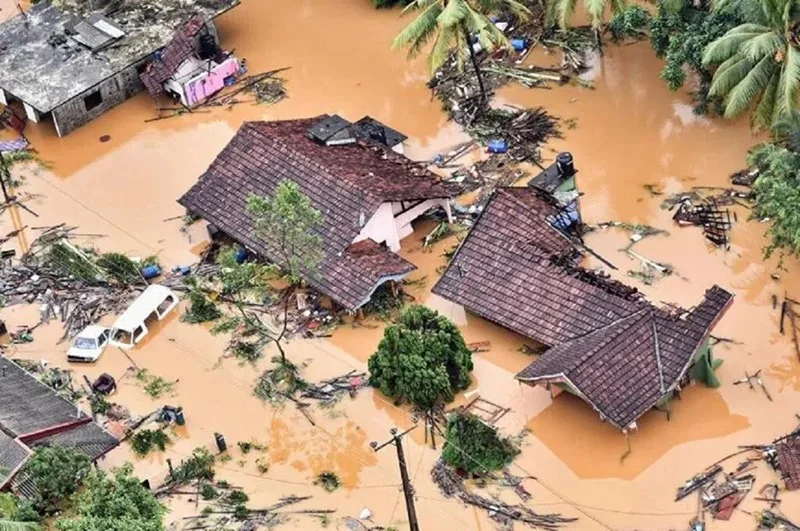
The manner in which the government succeeded in mobilising support from the international community, immediately after the devastating impact of Cyclone Ditwah, may have surprised many people of this country, particularly because our Opposition politicians were ridiculing our “inexperienced” government, in the recent past, for its inability to deal with the international community effectively. However, by now it is evident that the government, with the assistance of the international community and local nongovernmental actors, like major media organisations, has successfully managed the recovery efforts. So, let me begin by thanking them for what they have done so far.
Yet, some may argue that it is not difficult to mobilise the support for recovery efforts from the international community, immediately after any major disaster, and the real challenge is to sustain that support through the next few weeks, months and years. Because the recovery process, more specifically the post-recovery reconstruction process, requires long-term support. So, the government agencies should start immediately to focus on, in addition to initial disaster relief, a longer-term strategy for reconstruction. This is important because in a few weeks’ time, the focus of the global community may shift elsewhere … to another crisis in another corner of the world. Before that happens, the government should take initiatives to get the support from development partners on appropriate policy measures, including exceptional trade preferences, to help Sri Lanka in the recovery efforts through the medium and the long term.
Use of Trade Preferences to support recovery and reconstruction
In the past, the United States and the European Union used exceptional enhanced trade preferences as part of the assistance packages when countries were devastated by natural disasters, similar to Cyclone Ditwah. For example:
- After the devastating floods in Pakistan, in July 2010, the EU granted temporary, exceptional trade preferences to Pakistan (autonomous trade preferences) to aid economic recovery. This measure was a de facto waiver on the standard EU GSP (Generalised Scheme of Preferences) rules. The preferences, which were proposed in October 2010 and were applied until the end of 2013, effectively suspended import duties on 75 types of goods, including textiles and apparel items. The available studies on this waiver indicate that though a significant export hike occurred within a few months after the waiver became effective it did not significantly depress exports by competing countries. Subsequently, Pakistan was granted GSP+ status in 2014.
- Similarly, after the 2015 earthquakes in Nepal, the United States supported Nepal through an extension of unilateral additional preferences, the Nepal Trade Preferences Programme (NTPP). This was a 10-year initiative to grant duty-free access for up to 77 specific Nepali products to aid economic recovery after the 2015 earthquakes. This was also a de facto waiver on the standard US GSP rules.
- Earlier, after Hurricanes Mitch and Georges caused massive devastation across the Caribbean Basin nations, in 1998, severely impacting their economies, the United States proposed a long-term strategy for rebuilding the region that focused on trade enhancement. This resulted in the establishment of the US Caribbean Basin Trade Partnership Act (CBTPA), which was signed into law on 05 October, 2000, as Title II of the Trade and Development Act of 2000. This was a more comprehensive facility than those which were granted to Pakistan and Nepal.

What type of concession should Sri Lanka request from our development partners?
Given these precedents, it is appropriate for Sri Lanka to seek specific trade concessions from the European Union and the United States.
In the European Union, Sri Lanka already benefits from the GSP+ scheme. Under this arrangement Sri Lanka’s exports (theoretically) receive duty-free access into the EU markets. However, in 2023, Sri Lanka’s preference utilisation rate, that is, the ratio of preferential imports to GSP+ eligible imports, stood at 59%. This was significantly below the average utilisation of other GSP beneficiary countries. For example, in 2023, preference utilisation rates for Bangladesh and Pakistan were 90% and 88%, respectively. The main reason for the low utilisation rate of GSP by Sri Lanka is the very strict Rules of Origin requirements for the apparel exports from Sri Lanka. For example, to get GSP benefits, a woven garment from Sri Lanka must be made from fabric that itself had undergone a transformation from yarn to fabric in Sri Lanka or in another qualifying country. However, a similar garment from Bangladesh only requires a single-stage processing (that is, fabric to garment) qualifies for GSP. As a result, less than half of Sri Lanka’s apparel exports to the EU were ineligible for the preferences in 2023.
Sri Lanka should request a relaxation of this strict rule of origin to help economic recovery. As such a concession only covers GSP Rules of Origin only it would impact multilateral trade rules and would not require WTO approval. Hence could be granted immediately by the EU.
United States
Sri Lanka should submit a request to the United States for (a) temporary suspension of the recently introduced 20% additional ad valorem duty and (b) for a programme similar to the Nepal Trade Preferences Programme (NTPP), but designed specifically for Sri Lanka’s needs. As NTPP didn’t require WTO approval, similar concessions also can be granted without difficulty.
Similarly, country-specific requests should be carefully designed and submitted to Japan and other major trading partners.
(The writer is a retired public servant and can be reached at senadhiragomi@gmail.com)
by Gomi Senadhira
Features
Lasting power and beauty of words
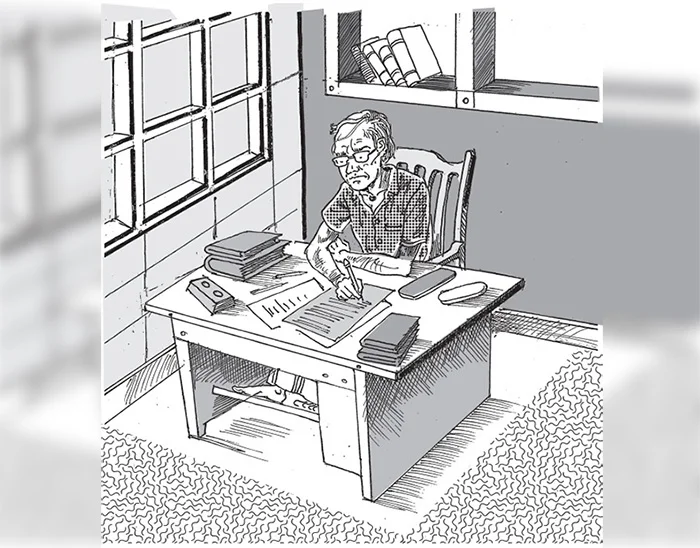
Novelists, poets, short story writers, lyricists, politicians and columnists use words for different purposes. While some of them use words to inform and elevate us, others use them to bolster their ego. If there was no such thing called words, we cannot even imagine what will happen to us. Whether you like it or not everything rests on words. If the Penal Code does not define a crime and prescribe a punishment, judges will not be able to convict criminals. Even the Constitution of our country is a printed document.
A mother’s lullaby contains snatches of sweet and healing words. The effect is immediate. The baby falls asleep within seconds. A lover’s soft and alluring words go right into his or her beloved. An army commander’s words encourage soldiers to go forward without fear. The British wartime Prime Minister Winston Churchill’s words still ring in our ears: “… we shall defend our Island, whatever the cost may be, we shall fight on the beaches, we shall fight on the landing grounds, we shall fight in the fields and in the streets, we shall fight in the hills; we shall never surrender …”
Writers wax eloquent on love. English novelist John Galsworthy wrote: “Love is no hot-house flower, but a wild plant, born of a wet night, born of an hour of sunshine; sprung from wild seed, blown along the road by a wild wind. A wild plant that, when it blooms by chance within the hedge of our gardens, we call a flower; and when it blooms outside we call a weed; but flower or weed, whose scent and colour are always wild.” While living in a world dominated by technology, we often hear a bunch of words that is colourless and often cut to verbal ribbons – “How R U” or “Luv U.” Such words seem to squeeze the life out of language.
Changing medium
Language is a constantly changing medium. New words and forms arrive and old ones die out. Whoever thought that the following Sinhala words would find a place in the Oxford English Dictionary? “Asweddumize, Avurudu, Baila, Kiribath, Kottu Roti, Mallung, Osari, Papare, Walawwa and Watalappan.” With all such borrowed words the English language is expanding and remains beautiful. The language helps us to express subtle ideas clearly and convincingly.
You are judged by the words you use. If you constantly use meaningless little phrases, you will be considered a worthless person. When you read a well-written piece of writing you will note how words jump and laugh on the paper or screen. Some of them wag their tails while others stand back like shy village belles. However, they serve a useful purpose. Words help us to write essays, poems, short stories and novels. If not for the beauty of the language, nobody will read what you write.
If you look at the words meaningfully, you will see some of them tap dancing while others stand to rigid attention. Big or small, all the words you pen form part of the action or part of the narrative. The words you write make your writing readable and exciting. That is why we read our favourite authors again and again.
Editorials
If a marriage is to succeed, partners should respect and love each other. Similarly, if you love words, they will help you to use them intelligently and forcefully. A recent survey in the United States has revealed that only eight per cent of people read the editorial. This is because most editorials are not readable. However, there are some editorials which compel us to read them. Some readers collect such editorials to be read later.
Only a lover of words would notice how some words run smoothly without making a noise. Other words appear to be dancing on the floor. Some words of certain writers are soothing while others set your blood pounding. There is a young monk who is preaching using simple words very effectively. He has a large following of young people addicted to drugs. After listening to his preaching, most of them have given up using illegal drugs. The message is loud and clear. If there is no demand for drugs, nobody will smuggle them into the country.
Some politicians use words so rounded at the edges and softened by wear that they are no longer interesting. The sounds they make are meaningless and listeners get more and more confused. Their expressions are full of expletives the meaning of which is often soiled with careless use of words.
Weather-making
Some words, whether written or spoken, stick like superglue. You will never forget them. William Vergara in his short essay on weather-making says, “Cloud-seeding has touched off one of the most baffling controversies in meteorological history. It has been blamed for or credited with practically all kinds of weather. Some scientists claim seeding can produce floods and hail. Others insist it creates droughts and dissipates clouds. Still others staunchly maintain it has no effect at all. The battle is far from over, but at last one clear conclusion is beginning to emerge: man can change the weather, and he is getting better at it.”
There are words that nurse the ego and heal the heart. The following short paragraph is a good example. S. Radhakrishnan says, “In every religion today we have small minorities who see beyond the horizon of their particular faith, not through religious fellowship is possible, not through the imposition of any one way on the whole but through an all-inclusive recognition that we are all searchers for the truth, pilgrims on the road, that we all aim at the same ethical and spiritual standard.”
There are some words joined together in common phrases. They are so beautiful that they elevate the human race. In the phrase ‘beyond a shadow of doubt’, ‘a shadow’ connotes a dark area covering light. ‘A doubt’ refers to hesitancy in belief. We use such phrases blithely because they are exquisitely beautiful in their structure. The English language is a repository of such miracles of expression that lead to deeper understanding or emphasis.
Social media
Social media use words powerfully. Sometimes they invent new words. Through the social media you can reach millions of viewers without the intervention of the government. Their opinion can stop wars and destroy tyrants. If you use the right words, you can even eliminate poverty to a great extent.
The choice of using powerful words is yours. However, before opening your mouth, tap the computer, unclip a pen, write a lyric or poem, think twice of the effect of your writing. When you talk with a purpose or write with pleasure, you enrich listeners and readers with your marvellous language skills. If you have a command of the language, you will put across your point of view that counts. Always try to find the right words and change the world for a better place for us to live.
By R. S. Karunaratne
karunaratners@gmail.com
Features
Why Sri Lanka Still Has No Doppler Radar – and Who Should Be Held Accountable
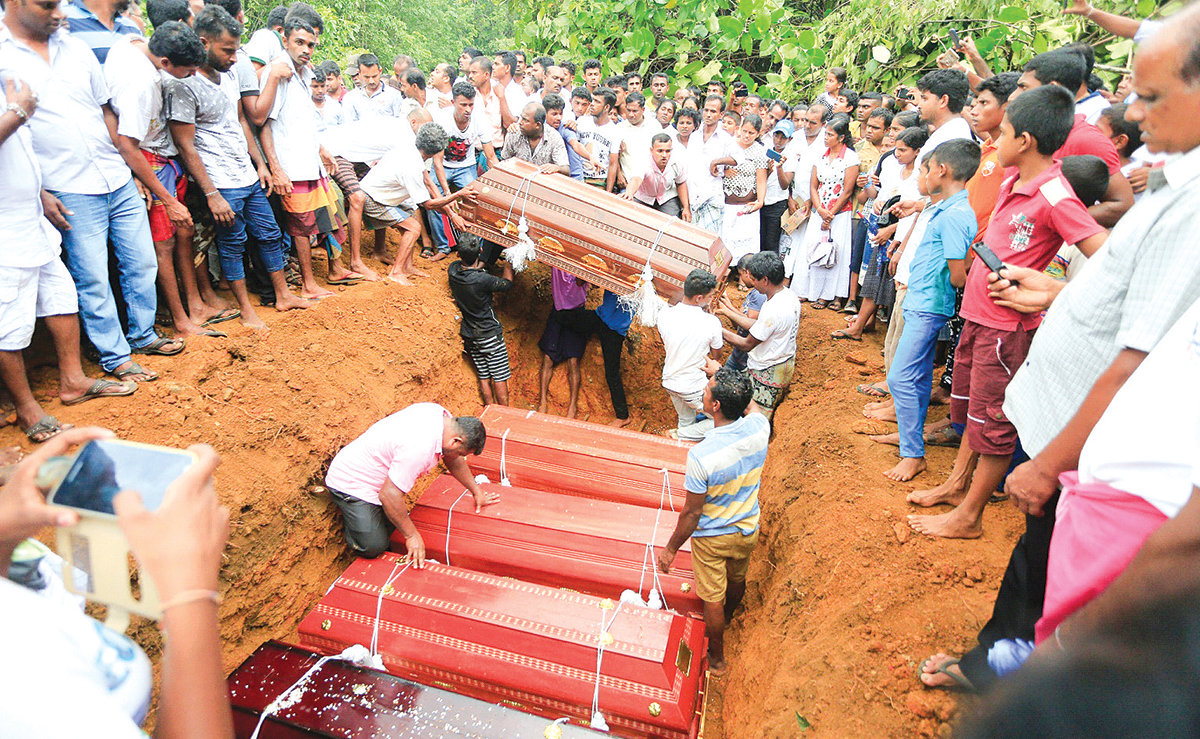
Eighteen Years of Delay:
Cyclone Ditwah has come and gone, leaving a trail of extensive damage to the country’s infrastructure, including buildings, roads, bridges, and 70% of the railway network. Thousands of hectares of farming land have been destroyed. Last but not least, nearly 1,000 people have lost their lives, and more than two million people have been displaced. The visuals uploaded to social media platforms graphically convey the widespread destruction Cyclone Ditwah has caused in our country.
The purpose of my article is to highlight, for the benefit of readers and the general public, how a project to establish a Doppler Weather Radar system, conceived in 2007, remains incomplete after 18 years. Despite multiple governments, shifting national priorities, and repeated natural disasters, the project remains incomplete.
Over the years, the National Audit Office, the Committee on Public Accounts (COPA), and several print and electronic media outlets have highlighted this failure. The last was an excellent five-minute broadcast by Maharaja Television Network on their News First broadcast in October 2024 under a series “What Happened to Sri Lanka”
The Agreement Between the Government of Sri Lanka and the World Meteorological Organisation in 2007.
The first formal attempt to establish a Doppler Radar system dates back to a Trust Fund agreement signed on 24 May 2007 between the Government of Sri Lanka (GoSL) and the World Meteorological Organisation (WMO). This agreement intended to modernize Sri Lanka’s meteorological infrastructure and bring the country on par with global early-warning standards.
The World Meteorological Organisation (WMO) is a specialized agency of the United Nations established on March 23, 1950. There are 193 member countries of the WMO, including Sri Lanka. Its primary role is to promote the establishment of a worldwide meteorological observation system and to serve as the authoritative voice on the state and behaviour of the Earth’s atmosphere, its interaction with the oceans, and the resulting climate and water resources.
According to the 2018 Performance Audit Report compiled by the National Audit Office, the GoSL entered into a trust fund agreement with the WMO to install a Doppler Radar System. The report states that USD 2,884,274 was deposited into the WMO bank account in Geneva, from which the Department of Metrology received USD 95,108 and an additional USD 113,046 in deposit interest. There is no mention as to who actually provided the funds. Based on available information, WMO does not fund projects of this magnitude.
The WMO was responsible for procuring the radar equipment, which it awarded on 18th June 2009 to an American company for USD 1,681,017. According to the audit report, a copy of the purchase contract was not available.
Monitoring the agreement’s implementation was assigned to the Ministry of Disaster Management, a signatory to the trust fund agreement. The audit report details the members of the steering committee appointed by designation to oversee the project. It consisted of personnel from the Ministry of Disaster Management, the Departments of Metrology, National Budget, External Resources and the Disaster Management Centre.
The Audit Report highlights failures in the core responsibilities that can be summarized as follows:
· Procurement irregularities—including flawed tender processes and inadequate technical evaluations.
· Poor site selection
—proposed radar sites did not meet elevation or clearance requirements.
· Civil works delays
—towers were incomplete or structurally unsuitable.
· Equipment left unused
—in some cases for years, exposing sensitive components to deterioration.
· Lack of inter-agency coordination
—between the Meteorology Department, Disaster Management Centre, and line ministries.
Some of the mistakes highlighted are incomprehensible. There is a mention that no soil test was carried out before the commencement of the construction of the tower. This led to construction halting after poor soil conditions were identified, requiring a shift of 10 to 15 meters from the original site. This resulted in further delays and cost overruns.
The equipment supplier had identified that construction work undertaken by a local contractor was not of acceptable quality for housing sensitive electronic equipment. No action had been taken to rectify these deficiencies. The audit report states, “It was observed that the delay in constructing the tower and the lack of proper quality were one of the main reasons for the failure of the project”.
In October 2012, when the supplier commenced installation, the work was soon abandoned after the vehicle carrying the heavy crane required to lift the radar equipment crashed down the mountain. The next attempt was made in October 2013, one year later. Although the equipment was installed, the system could not be operationalised because electronic connectivity was not provided (as stated in the audit report).
In 2015, following a UNOPS (United Nations Office for Project Services) inspection, it was determined that the equipment needed to be returned to the supplier because some sensitive electronic devices had been damaged due to long-term disuse, and a further 1.5 years had elapsed by 2017, when the equipment was finally returned to the supplier. In March 2018, the estimated repair cost was USD 1,095,935, which was deemed excessive, and the project was abandoned.
COPA proceedings
The Committee on Public Accounts (COPA) discussed the radar project on August 10, 2023, and several press reports state that the GOSL incurred a loss of Rs. 78 million due to the project’s failure. This, I believe, is the cost of constructing the Tower. It is mentioned that Rs. 402 million had been spent on the radar system, of which Rs. 323 million was drawn from the trust fund established with WMO. It was also highlighted that approximately Rs. 8 million worth of equipment had been stolen and that the Police and the Bribery and Corruption Commission were investigating the matter.
JICA support and project stagnation
Despite the project’s failure with WMO, the Japan International Cooperation Agency (JICA) entered into an agreement with GOSL on June 30, 2017 to install two Doppler Radar Systems in Puttalam and Pottuvil. JICA has pledged 2.5 billion Japanese yen (LKR 3.4 billion at the time) as a grant. It was envisaged that the project would be completed in 2021.
Once again, the perennial delays that afflict the GOSL and bureaucracy have resulted in the groundbreaking ceremony being held only in December 2024. The delay is attributed to the COVID-19 pandemic and Sri Lanka’s economic crisis.
The seven-year delay between the signing of the agreement and project commencement has led to significant cost increases, forcing JICA to limit the project to installing only one Doppler Radar system in Puttalam.
Impact of the missing radar during Ditwah
As I am not a meteorologist and do not wish to make a judgment on this, I have decided to include the statement issued by JICA after the groundbreaking ceremony on December 24, 2024.
“In partnership with the Department of Meteorology (DoM), JICA is spearheading the establishment of the Doppler Weather Radar Network in the Puttalam district, which can realize accurate weather observation and weather prediction based on the collected data by the radar. This initiative is a significant step in strengthening Sri Lanka’s improving its climate resilience including not only reducing risks of floods, landslides, and drought but also agriculture and fishery“.
Based on online research, a Doppler Weather Radar system is designed to observe weather systems in real time. While the technical details are complex, the system essentially provides localized, uptotheminute information on rainfall patterns, storm movements, and approaching severe weather. Countries worldwide rely on such systems to issue timely alerts for monsoons, tropical depressions, and cyclones. It is reported that India has invested in 30 Doppler radar systems, which have helped minimize the loss of life.
Without radar, Sri Lanka must rely primarily on satellite imagery and foreign meteorological centres, which cannot capture the finescale, rapidly changing weather patterns that often cause localized disasters here.
The general consensus is that, while no single system can prevent natural disasters, an operational Doppler Radar almost certainly would have strengthened Sri Lanka’s preparedness and reduced the extent of damage and loss.
Conclusion
Sri Lanka’s inability to commission a Doppler Radar system, despite nearly two decades of attempts, represents one of the most significant governance failures in the country’s disastermanagement history.
Audit findings, parliamentary oversight proceedings, and donor records all confirm the same troubling truth: Sri Lanka has spent public money, signed international agreements, received foreign assistance, and still has no operational radar. This raises a critical question: should those responsible for this prolonged failure be held legally accountable?
Now may not be the time to determine the extent to which the current government and bureaucrats failed the people. I believe an independent commission comprising foreign experts in disaster management from India and Japan should be appointed, maybe in six months, to identify failures in managing Cyclone Ditwah.
However, those who governed the country from 2007 to 2024 should be held accountable for their failures, and legal action should be pursued against the politicians and bureaucrats responsible for disaster management for their failure to implement the 2007 project with the WMO successfully.
Sri Lanka cannot afford another 18 years of delay. The time for action, transparency, and responsibility has arrived.
(The views and opinions expressed in this article are solely those of the author and do not necessarily reflect the policy or position of any organization or institution with which the author is affiliated).
By Sanjeewa Jayaweera
-
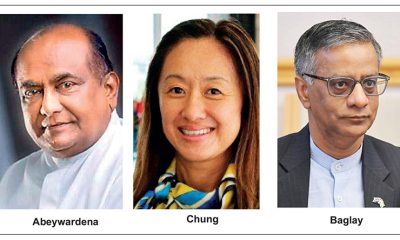
 Features5 days ago
Features5 days agoFinally, Mahinda Yapa sets the record straight
-
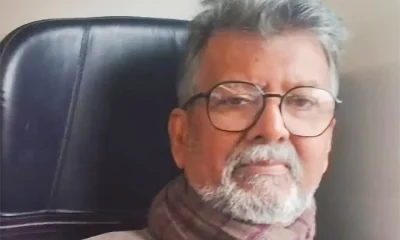
 News6 days ago
News6 days agoCyclone Ditwah leaves Sri Lanka’s biodiversity in ruins: Top scientist warns of unseen ecological disaster
-
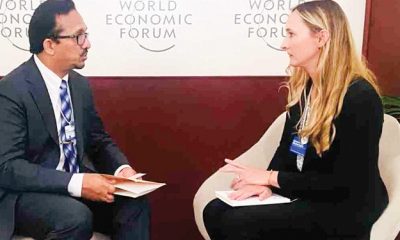
 Features5 days ago
Features5 days agoHandunnetti and Colonial Shackles of English in Sri Lanka
-

 Business4 days ago
Business4 days agoCabinet approves establishment of two 50 MW wind power stations in Mullikulum, Mannar region
-

 News7 days ago
News7 days agoJetstar to launch Australia’s only low-cost direct flights to Sri Lanka, with fares from just $315^
-

 News4 days ago
News4 days agoGota ordered to give court evidence of life threats
-

 Features6 days ago
Features6 days agoAn awakening: Revisiting education policy after Cyclone Ditwah
-

 Features4 days ago
Features4 days agoCliff and Hank recreate golden era of ‘The Young Ones’













